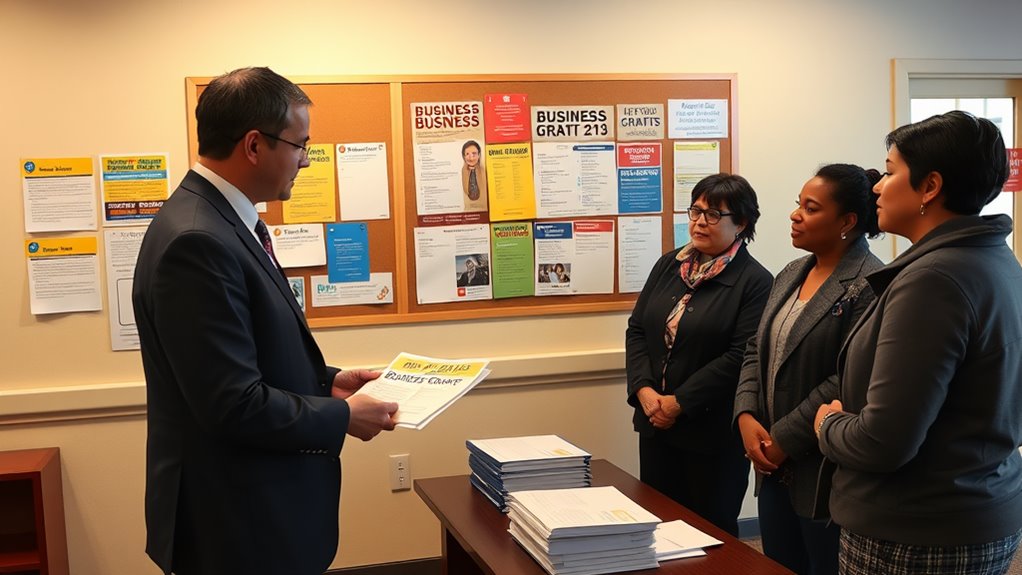To get free money through business grants, start by identifying options on Grants.gov or local city and state resources. Prepare a strong application with a detailed business plan, updated financial records, and a clear demonstration of your unique value. Highlight growth potential or social impact to stand out. Leverage minority-focused or niche programs like the Amber Grant or Verizon’s Small Business Digital Ready. Stay proactive and organized—there’s more to uncover that can boost your chances.
Key Takeaways
- Search Grants.gov for federal grants tailored to small businesses, including minority-focused and innovation-specific opportunities.
- Explore state and local programs like Illinois Infrastructure Grants, Texas Enterprise Fund, and San Antonio’s Alamo Small Business Grant.
- Prepare a strong application with a detailed business plan, financial projections, and alignment with grant criteria.
- Highlight unique aspects like proprietary technology, customer growth, social impact, or awards to stand out.
- Leverage private grants such as the Amber Grant, NASE Growth Grant, or FedEx Small Business Grants for additional funding.
Identify Eligible Business Grants
To identify eligible business grants, start by searching Grants.gov for federal opportunities that match your business type and location. The federal government offers numerous programs tailored to Small businesses, ensuring you find funding that aligns with your goals. Once you’ve explored federal grants, expand your search to state and local governments, which often provide additional resources. For instance, programs like the Illinois Infrastructure Grants allocate billions for community and business projects. Specialized grants, such as the NIH COVID-19 Research Grants, cater to niche sectors like biomedical technology, while the NIDILRR SBIR focuses on disability-related research with $1 million in funding. Don’t overlook programs like the Minnesota Emerging Entrepreneur Loan Program, designed for minority, veteran, and women-owned businesses. Carefully review each program’s eligibility criteria before starting the application process. By targeting grants that fit your business’s unique needs, you’ll maximize your chances of securing financial support.
Research City-Specific Grant Opportunities

City-specific grant opportunities can provide targeted financial support for businesses in particular regions, addressing local needs and priorities. Start by identifying grants offered by your city’s economic development department, which often focus on small businesses to drive community growth. For example, the Dayton Community Development Corporation provides up to $25,000 for businesses in designated Downtown Dayton areas. In San Antonio, the Economic Development Department offers programs like the Alamo Small Business Grant Program, awarding $2,500 for storefront improvements. Houston’s Open for Business Grant Program supports diverse-owned small businesses with grants ranging from $5,000 to $100,000. Even food businesses in Dallas can benefit from the Santander Bank Cultivate Small Business Program, which offers $2,500 to $13,000. These programs aim to enhance local economic development by supporting operational needs, expansions, and improvements. Research what’s available in your area to access tailored financial assistance for your business.
Prepare a Detailed Business Plan

When applying for business grants, a detailed business plan is essential to showcase your vision and strategy. Small businesses must include an executive summary, company description, market analysis, organizational structure, and financial projections to strengthen their applications. Highlight your unique value proposition and target audience to demonstrate growth potential, aligning with the mission of grant programs. Tailor your plan to funding opportunities, whether through the Small Business Administration (SBA) or other grant programs. Include specific goals, timelines, and measurable objectives to prove how grants available will be utilized effectively. Supporting data, such as market research, will bolster your case for business financing. Conduct a thorough SWOT analysis to evaluate strengths, weaknesses, opportunities, and threats, ensuring a comprehensive approach to your business plan.
| Section | Purpose | Key Focus |
|---|---|---|
| Executive Summary | Overview of business | Vision and strategy |
| Market Analysis | Identify target audience | Growth potential |
| Financial Projections | Demonstrate funding needs | Utilization of grants |
| Organizational Structure | Showcase team capability | Business readiness |
| Goals & Timelines | Prove measurable outcomes | Alignment with grant criteria |
Craft a compelling lusiness plan to maximize your chances of securing grants available for your small business.
Gather Updated Financial Records

After crafting a detailed business plan, it’s essential to prepare accurate and up-to-date financial records to strengthen your grant application. Start by organizing your balance sheets, profit/loss statements, and cash flow statements, as these demonstrate your business’s stability and operational efficiency. Include tax returns from the past three years to verify compliance and financial history, which reviewers often require. Also, draft current financial projections to highlight your business’s growth potential and long-term sustainability. Don’t overlook expense reports and revenue records, as they provide concrete evidence of your financial need for grant funding. Guarantee all documents are clear, detailed, and error-free to build credibility. Well-prepared financial records not only showcase your business’s health but also reassure grantors that their funds will be used effectively. A real estate accounting system can help maintain accurate records and streamline the process of compiling financial documents. A meticulous approach here can greatly improve your chances of approval.
Submit Application Materials Before Deadlines

To secure funding, it’s critical to submit grant application materials before deadlines, as late submissions are typically disqualified. Start by monitoring grant application deadlines on platforms like Grants.gov, where many opportunities are posted. Prepare all required documents, including detailed business plans and up-to-date financial records, well in advance. Programs like the Small Business Readiness for Resiliency (R4R) Program may have rolling or fixed deadlines, so verify specifics for each. Recurring grants, such as the NASE Growth Grant, review applications quarterly in January, April, July, and October—set calendar reminders to stay on top of these dates. Finally, double-check submission requirements and formatting to guarantee your application is complete and error-free.
- Track deadlines: Use Grants.gov to monitor key dates.
- Prepare early: Gather business plans and financial records ahead of time.
- Set reminders: Use calendar reminders for recurring grants like NASE Growth Grant.
- Verify requirements: Check submission guidelines and formatting for programs like R4R.
Highlight Unique Business Aspects

While crafting your grant application, it’s essential to distinctly highlight what sets your business apart. Focus on your unique business aspects, such as innovative features or proprietary technologies, that differentiate you from competitors. Emphasize metrics like customer growth rates, revenue increases, or social impact to demonstrate your business success. Showcase awards, recognitions, or media coverage to build credibility and align with grant objectives. Detail how your business addresses specific community needs or industry gaps, proving its relevance and value to stakeholders. Include testimonials or case studies that illustrate the tangible benefits your business provides, whether it’s job creation, improved services, or enhanced community well-being. By clearly articulating these elements, you’ll show grantors how their support can amplify your impact as a small business and contribute to long-term success. Consider incorporating modern interior features to enhance your property’s appeal and align with current market trends.
Utilize Local Resources for Guidance

Navigating the grant application process becomes more manageable when leveraging local resources designed to support your business. Your local Small Business Development Center (SBDC) offers personalized assistance to help you identify grant opportunities and craft compelling grant applications. For minority-owned businesses, the Minority Business Development Agency (MBDA) centers provide tailored guidance to navigate funding programs effectively. You can also attend workshops hosted by the Economic Development Administration (EDA) to learn about grants that promote local economic growth. Additionally, your state’s Trade Expansion Program (STEP) office specializes in helping businesses expand internationally, offering valuable resources and funding pathways.
- SBDC: Get extensive support for grant applications and access to over 200 grants.
- MBDA: Receive targeted assistance for minority-owned businesses.
- EDA: Attend workshops to uncover grants boosting local economies.
- STEP: Explore resources for international trade expansion.
These resources guarantee you’re well-equipped to secure funding for your business goals.
Monitor Programs for New Opportunities

Set a weekly reminder to check Grants.gov for upcoming federal grant opportunities tailored to your industry. Subscribe to email alerts from the SBA and local SBDCs to catch new programs before deadlines pass. Explore Texas-specific grants through platforms like the Texas Enterprise Fund to uncover performance-based funding options.
Track Updates Regularly
To stay ahead in securing business grants, you’ll need to actively track updates from key sources. Sign up for email notifications from Grants.gov to receive timely alerts about new federal grant opportunities tailored to your business. Regularly visit your state economic development agency website for quarterly updates on local funding programs. Keep an eye on the Small Business Administration’s STEP Program page for annual announcements and deadlines related to export-focused grants. Additionally, subscribe to newsletters from private grant providers like The Amber Grant Foundation to stay informed about periodic funding opportunities. Don’t forget to check the U.S. Department of Commerce MBDA’s grant portal for time-sensitive opportunities aimed at minority-owned businesses. By staying proactive, you’ll never miss a chance to secure funding.
- Grants.gov: Sign up for email alerts.
- State economic development agency: Monitor quarterly updates.
- SBA STEP Program: Track annual announcements.
- MBDA grant portal: Check for minority-focused grants.
Explore Diverse Sources
When exploring diverse sources for business grants, you’ll discover a wealth of opportunities beyond federal programs. Start by checking the National Association for the Self-Employed’s Growth Grant, which reviews applications quarterly. Visit Grants.gov weekly to find over 1,000 federal opportunities like the Small Business Innovation Research and Small Business Technology Transfer programs. Don’t overlook Verizon Small Business Digital Ready, which awards $10,000 to businesses completing two resources. The Amber Grant supports women entrepreneurs with monthly and annual awards. Explore American Express Backing Small, the Minority Business Development Agency, and the Awesome Foundation for niche funding. FedEx business and digital grants also offer financial support. By diversifying your search, you’ll maximize your chances of securing funding tailored to your needs. Consistently monitor these programs to seize new opportunities as they arise.
Conclusion
Did you know 93% of businesses fail due to cash flow issues? Don’t let that be you. Securing free money through business grants can be your lifeline, but it’s up to you to act now. Research diligently, tailor your application, and highlight what makes your business stand out. Leverage local resources and stay ahead of deadlines. With persistence and preparation, you’ll unveil opportunities to fund your dreams—without owing a dime. Start today; your future depends on it.




